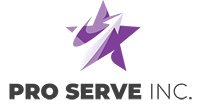By Ken Wysocky | Money Machines | Cleaner Magazine | March 2013
 Tube-lancer system increases efficiency and takes the danger out of operators’ hands.
Tube-lancer system increases efficiency and takes the danger out of operators’ hands.
Safety is always a paramount concern at ProServe Inc., where employees routinely use industrial hydroblasting equipment that can generate water pressure up to 40,000 psi. That’s why the industrial-cleaning and hydroexcavating company based in Prairieville, La., invested in a Saflex 2000 semi-automated tube-lancer system made by NLB Corp.
When ProServe operators use the Saflex 2000, they don’t touch the high-pressure hose that affixes to the cleaning lance. Instead, they hold a rifle-like device that two hoses and lances pass through during cleaning operations. Push-button controls on the device allow them to drive the hoses in and out of the tubes. When space permits, they can also mount a special device on an exchanger that allows an operator to move the lances around automatically via stand-mounted remote controls.
“I like it whenever we can remove high-pressure lines from someone’s hands, which is the equivalent of handling a live wire,” says ProServe co-owner Curtis Lonidier. “With the Saflex, the operator does not come in contact with any high-pressure leak or hose burst … it eliminates about 90 percent of the risks involved.”
The company commonly uses the system to clean heat-exchanger tubes in refineries and chemical plants. The tubes’ inside diameters typically range from 1/2 to 1 1/2 inches. The exchangers need cleaning because the materials that pass through them get baked onto the tube interiors, which, in turn, decreases their ability to transfer heat.
Lonidier also lauds the Saflex because operators can control its speed, which greatly improves the efficiency and consistency of cleaning operations. When they use a lance manually, even the best operators usually push it in and out at varying speeds, which reduces cleaning effectiveness. Moreover, when they work manually, lance operators can only clean one tube at a time; the Saflex can index two hoses at a time.
“More accurate control over speed gives the lance tips a more accurate time for surface contact, versus doing it by hand,” he says. “And by cleaning two tubes at a time instead of one, we can do certain jobs about 40 percent faster. You’d think it would be 50 percent faster, but in the real world, it’s not because this system takes a little more time to set up and tear down.”
Speed is critical to ProServe customers because it’s expensive to shut down equipment for even short periods of time. As such, a system that can reduce cleaning time by about 40 percent and clean more effectively is a “win-win” for customers and ProServe, Lonidier says.
“They get their exchangers back soon and they’re cleaner, too,” he says. “And we can do more jobs per year.”
Another bonus: The Saflex system enables ProServe to reduce a typical hydroblasting crew from three employees to two, which allows it to more effectively allocate its employees, boosting productivity and profitability.
“It enables us to maneuver our people elsewhere on other jobs, which helps us grow as a company,” he explains. “Good help is hard to find, so if we can spread good employees over a broader business base, then everyone’s happy.”
Lonidier points out that the Saflex can’t be used in all tube-cleaning applications, so there are times when employees still use hand-held lances. But in the long run, he says the company uses the system more than enough to eventually pay for itself through increased productivity – plus enhanced employee safety.
“Increased efficiency and safety are the two things that really get me interested in new technology,” he says. “Reduced risk exposure is beneficial to all of us – our company, our employees and our customers. It’s definitely worth the effort to try new technologies.”
